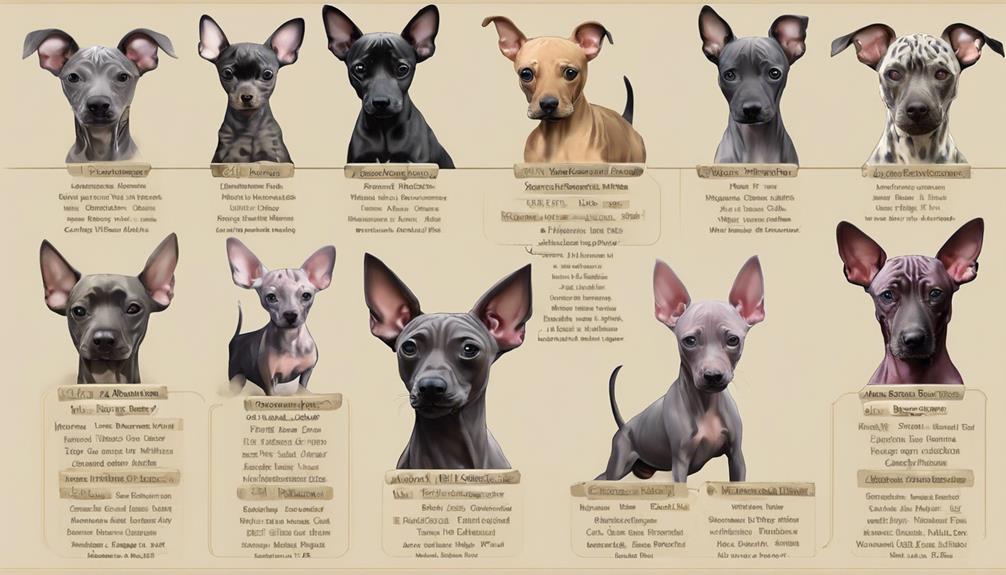When pronouncing 'Xoloitzcuintli', say 'show-low-eets-queen-tlee'. The 'X' sounds like 'sh'. Stress the second-to-last syllable, 'queen', for accuracy. Avoid common mispronunciations and focus on the sounds in 'X'. This Mexican Hairless Dog holds essential significance. It was revered by the Aztecs for healing powers. Symbolizing Mexican heritage, it played a crucial role in ancient rituals. Learn more about the breed's cultural importance and unique name.
Key Takeaways
- Pronounce 'Xoloitzcuintli' as 'show-low-eets-queen-tlee' with emphasis on 'queen'.
- Accent falls on the second-to-last syllable for accurate pronunciation.
- Importance of syllable stress in 'X' for precise enunciation.
- Avoid common mispronunciations by following the phonetic guide examples.
- Recognized globally in major kennel clubs for its cultural and historical significance.
Correct Pronunciation of 'Xoloitzcuintli'
To properly pronounce 'Xoloitzcuintli,' we say it as 'show-low-eets-queen-tlee.' The 'X' in Xoloitzcuintli is pronounced as 'sh' in English, so keep that in mind when tackling this unique name. The accent falls on the second-to-last syllable, 'queen,' giving the word a melodic flow when spoken correctly. When practicing saying the name, begin slowly to make sure you're hitting each syllable accurately. As you gain confidence, gradually increase your speed while maintaining clarity.
Listening to native speakers or utilizing online resources can be invaluable tools in mastering the pronunciation of 'Xoloitzcuintli.' Hearing the name spoken by those familiar with its nuances can help you fine-tune your own pronunciation. Don't be discouraged if it takes time to get it just right; practice and patience are key. Embrace the challenge of pronouncing 'Xoloitzcuintli' correctly, and soon enough, you'll be saying it with ease.
Importance of Syllable Stress
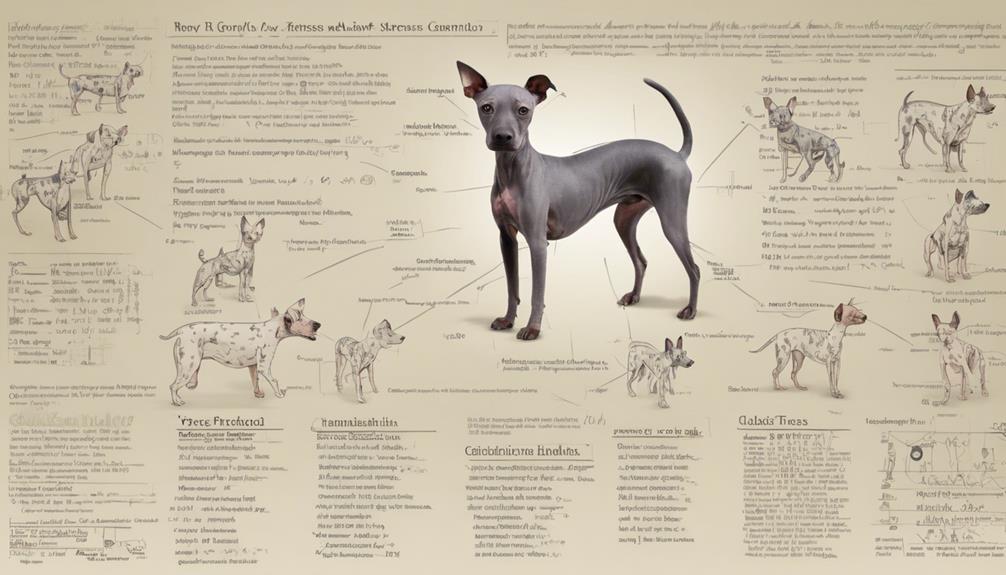
Understanding the importance of syllable stress is essential to mastering the pronunciation of challenging words like 'Xoloitzcuintli.' When it comes to names like this, getting the stress on the right syllable can make all the difference in saying it correctly.
Here are three reasons why syllable stress is vital:
- Maintaining Integrity: By placing the stress on the correct syllable, such as the second-to-last one in 'Xoloitzcuintli,' you preserve the authenticity and originality of the name.
- Avoiding Mispronunciations: Incorrectly stressing a syllable can lead to mispronunciations, potentially changing the meaning or causing confusion.
- Practice for Mastery: Emphasizing the right syllable might feel unfamiliar at first, but with practice, you can confidently say 'Xoloitzcuintli' with precision and respect.
Avoiding Common Mispronunciations
When pronouncing the name Xoloitzcuintli, it's important to pay attention to the 'tz' sound and emphasize the 'queen' syllable.
Common mispronunciations like 'zolo-itz-queen-til' or 'zolo-itz-kwin-til' can be avoided by following correct stress patterns.
Practice slowly and seek guidance from native speakers to master the accurate pronunciation.
Correct Spelling Tips
During our discussion on correct spelling tips for the Mexican Hairless Dog breed, it's important to emphasize the significance of avoiding common mispronunciations by using the correct spelling, Xoloitzcuintli, instead of common misspellings like Xoloitzquintli or Xolotzcuintli.
Here are some tips to help you spell the name accurately:
- Remember the 'X' is pronounced as 'sh' in English, not as a 'z' sound.
- Pay attention to the correct placement of 'tz' and 'cuintli' in the name.
- Double-check the spelling to ensure precise pronunciation and understanding of the breed's name.
Phonetic Guide Examples
To guarantee accurate pronunciation, mastering the phonetic guide for the Mexican Hairless Dog breed's name, Xoloitzcuintli, is crucial. The correct way to say Xoloitzcuintli is 'show-low-eets-queen-tlee,' with emphasis on 'queen.'
Common mistakes like 'zolo-itz-queen-til' or 'zolo-itz-kwin-til' can be avoided by focusing on the 'sh' sound and accentuating the correct syllable. Practice slowly to perfect the 'tz' sound and gradually pick up speed for fluency.
Listening to native speakers or online resources can aid in grasping and reproducing the accurate pronunciation. Remember, stress the 'queen' part of the name and refrain from placing too much emphasis on 'itz.'
Mastering the phonetic guide guarantees you say Xoloitzcuintli correctly every time.
Practice Pronunciation Techniques
Let's practice pronunciation techniques to guarantee correct articulation of the Mexican Hairless Dog breed's name, Xoloitzcuintli, avoiding common mispronunciations.
- Focus on pronouncing 'Xoloitzcuintli' as 'show-low-eets-queen-tlee' to avoid common mispronunciations.
- Pay attention to the 'X' sound being pronounced as 'sh' and the emphasis on the second-to-last syllable 'queen.'
- Practice saying the name slowly, then gradually increase speed to improve pronunciation accuracy.
Emphasizing Sounds in 'X'
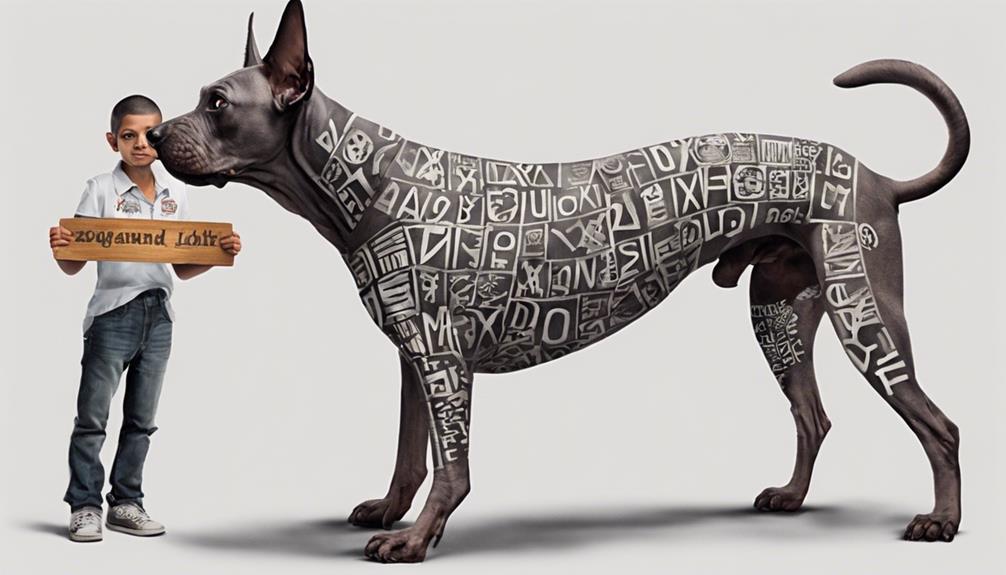
Frequently, mastering the pronunciation of the Mexican Hairless Dog's name involves emphasizing the unique 'sh' sound in the letter 'X'. When saying 'Xoloitzcuintli,' focus on the 'sh' sound at the beginning, similar to the English word 'show.' It's important to avoid pronouncing the 'X' as a 'z' or 'ks' sound.
Practice slowly, starting with the 'sh' sound and then gradually adding the other syllables to build confidence in pronouncing the full name correctly. Understanding the distinct 'X' pronunciation is vital for mastering the correct way to say Xoloitzcuintli.
Take your time and pay attention to the nuances of this sound to guarantee accuracy in your pronunciation. By emphasizing the 'sh' in 'X,' you'll be well on your way to confidently saying the name of the Mexican Hairless Dog breed with ease.
Historical Significance of the Breed
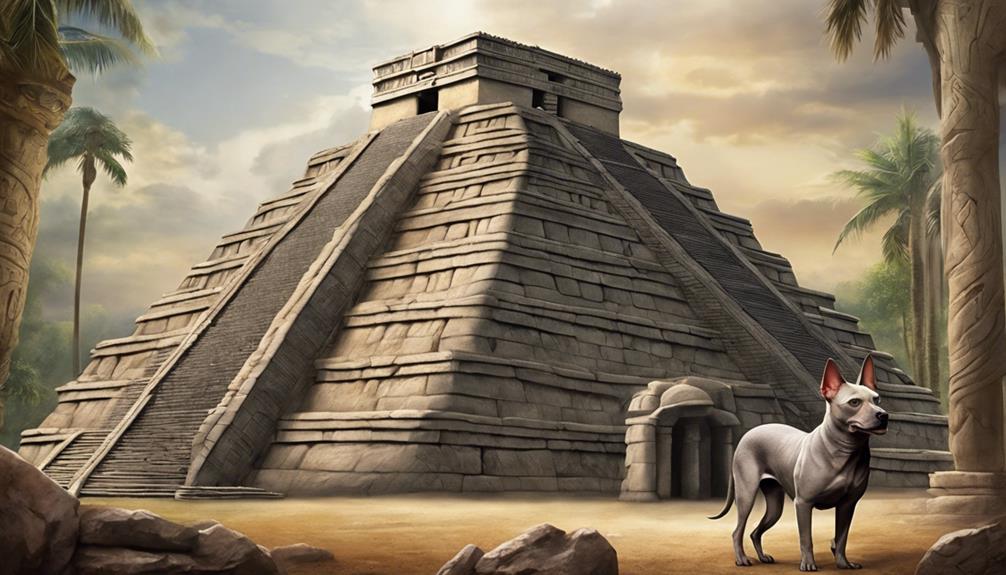
The historical significance of the Xoloitzcuintli breed is deeply intertwined with ancient Aztec beliefs and practices. These fascinating facts about the Xoloitzcuintli breed will give you a glimpse into their rich history:
- Healing Powers: Xoloitzcuintli were believed to possess healing powers by the Aztecs, making them highly revered in ancient times.
- Cultural Importance: The breed played a significant role in ancient rituals and ceremonies, showcasing their cultural significance and deep connection to Aztec traditions.
- Guardians of Civilization: Xoloitzcuintli weren't just companions but also served as guardians for ancient civilizations, symbolizing protection and loyalty in a spiritual context.
The name Xoloitzcuintli itself originates from the Aztec god Xolotl, highlighting the breed's divine connection in Aztec mythology. Today, the historical importance of the Xoloitzcuintli is globally recognized, leading to their presence in major kennel clubs worldwide.
Cultural Role in Ancient Civilizations
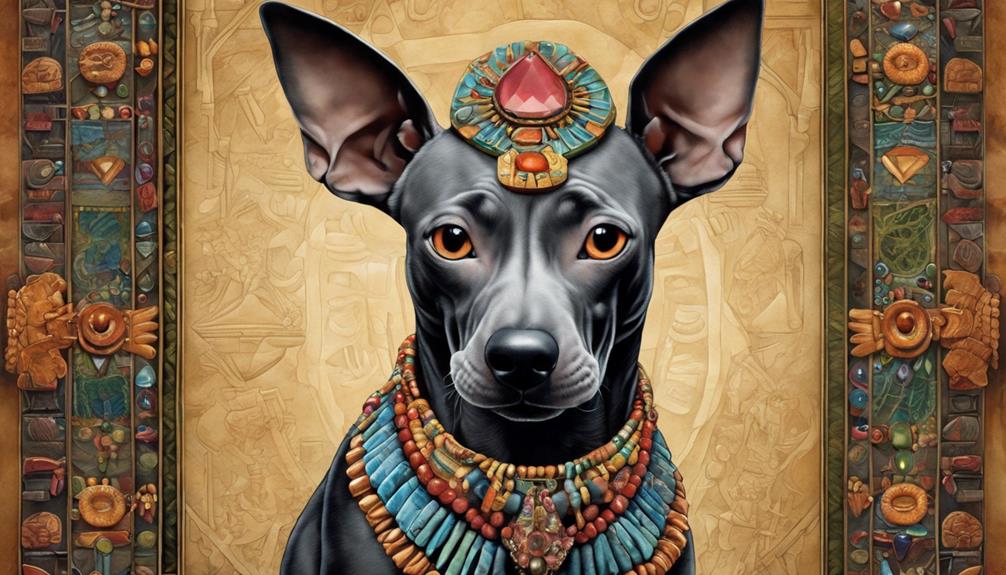
The Xoloitzcuintli held an important role in ancient civilizations like the Aztecs. They were revered for their sacred status and healing powers. These dogs weren't only companions but also played a significant role in various rituals and ceremonies of the time.
Their presence extended beyond mere utility, becoming symbols in art and culture. They embodied the rich tapestry of ancient Mesoamerican civilizations.
Ancient Cultural Significance
Revered for their healing powers and spiritual significance, Xoloitzcuintli held a sacred role in ancient civilizations like the Aztecs. These ancient Mexican hairless dogs were more than just pets; they were esteemed companions with a divine connection, playing essential roles in rituals and ceremonies.
The Aztecs believed in their ability to protect and guide both the living and the deceased, showcasing their revered status in society. The name 'Xoloitzcuintli' itself reflects the deep-rooted spiritual significance these dogs held, symbolizing the fusion of the Aztec god Xolotl with the term for dog.
Their historical importance as symbols of protection and spirituality has endured through the ages, continuing to captivate and inspire admiration today.
Rituals and Ceremonies
In ancient civilizations like the Aztecs, Xoloitzcuintli played a pivotal role in rituals and ceremonies due to their revered healing powers and spiritual significance. These sacred dogs were believed to possess mystical abilities that could aid in spiritual healing and protection. The Aztecs held Xoloitzcuintli in high regard, often including them in important ceremonies to honor their divine connection. These dogs served not only as loyal companions but also as guardians symbolizing strength and loyalty.
The name Xoloitzcuintli itself carries a deep meaning, originating from the Aztec god Xolotl and 'itzcuintli,' emphasizing their divine importance. Today, the historical role of Xoloitzcuintli in rituals and ceremonies underscores their cultural significance and the deep reverence they hold in Mexican heritage.
Symbolism in Art
Exploring the intricate connections between Xoloitzcuintli and ancient art reveals profound insights into their symbolic significance in Mexican culture.
- Xoloitzcuintli were depicted in ancient Aztec art as companions to gods and warriors, showcasing their revered status.
- Artworks featuring Xoloitzcuintli often symbolized protection, loyalty, and spiritual significance, reflecting their importance in Aztec society.
- The breed's portrayal in pottery, sculptures, and murals highlights their integral role as symbols of divine protection, emphasizing their cultural significance.
The presence of Xoloitzcuintli in art not only served decorative purposes but also carried deep cultural meanings, underlining their position as revered companions and guardians in ancient Mexican civilizations.
Symbol of Mexican Heritage
Xoloitzcuintli stands as a powerful symbol of Mexican heritage and culture, deeply rooted in ancient civilizations. The Xoloitzcuintli breed's history dates back to the times of the Aztec civilizations, where they were revered as sacred dogs. These unique creatures are not only a part of Mexico's past but also play a significant role in its present. They are often featured in various Mexican artworks, literature, and folklore, showcasing their importance in the country's cultural tapestry. Additionally, Xoloitzcuintli are closely associated with important Mexican traditions such as the vibrant celebration of the Day of the Dead.
To further comprehend the significance of Xoloitzcuintli as a symbol of Mexican heritage, let's explore a comparison table that highlights their cultural importance:
| Aspect | Description |
|---|---|
| Ancient Symbolism | Revered as sacred in Aztec civilizations |
| Artistic Influence | Common subject in Mexican artworks and folklore |
| Cultural Traditions | Integral to Mexican celebrations like Day of the Dead |
| National Identity | Represents a unique aspect of Mexican culture |
Frequently Asked Questions
How Do You Pronounce the Name of the Mexican Hairless Dog?
We pronounce the Mexican Hairless Dog's name as 'show-low-eets-queen-tlee.' Remember, the 'X' sounds like 'sh' in English. Avoid common errors like 'zolo-itz-queen-til.' Xoloitzcuintli come in toy, miniature, and standard sizes, known for affectionate nature.
What Is the Name of the Hairless Mexican Dog?
The name of the hairless Mexican dog is Xoloitzcuintli. It's pronounced 'show-low-eets-queen-tlee.' Xoloitzcuintli, also called the Mexican Hairless Dog, is a revered breed with roots in Aztec culture and is recognized globally.
What Is the Hairless Dog Called in Spanish?
We call the hairless dog 'Perro Sin Pelo' in Spanish. It's a direct translation that captures their unique look. Understanding their name is like peering into a cultural window, revealing the rich history behind these fascinating creatures.
Do Mexican Hairless Dogs Bark?
Yes, Mexican Hairless Dogs, or Xoloitzcuintli, bark but are not excessive. They communicate, alert, and show excitement through barking. Training and socialization help manage barking. Understanding their needs and providing stimulation can reduce unnecessary barking.
Conclusion
To sum up, mastering the pronunciation of 'Xoloitzcuintli' is essential for honoring the Mexican hairless dog's heritage. Remember to emphasize the sounds in 'X' and stress the syllables correctly to show respect for this unique breed.
By understanding the historical significance and cultural role of the Xolo, we can appreciate its symbolism in Mexican heritage. So, let's continue to celebrate these remarkable dogs and their rich history, one correct pronunciation at a time.
